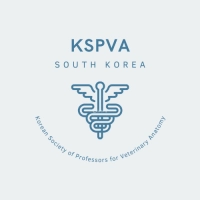Canine Anatomy Package
- > 3 hours
- Package
Overview
This course is for anyone interested in learning more about Veterinary Medicine. Our canine anatomy course is a certificate course designed to be an introduction to the various systems that make up the canine body. The course consists of 32 parts, for each of which a 2D and a 3D version is available. You will be satisfied with the high quality of our videos. Translated Guide to the Dissection of the Dog by Howard E. Evans and Alexander de Lahunta performed by the Korean Society of Professors for Veterinary Anatomy.
Package consists of sections:
- Extrinsic Muscles of the Thoracic Limb
- Muscles of the shoulder and brachium
- Muscles of the forearm and forepaw
- Muscles of the thigh and hip
- Muscles of the calf
- Hypaxial Muscles of the Neck & Trunk
- Epaxial Muscles of the Neck & Trunk
- Blood vessels and nerves of the neck
- Blood Vessels and Nerves of the Thoracic Wall
- Thoracic Cavity and Lung (Part 1)
- Thoracic Cavity and Lung (Part 2)
- Blood Vessels and Nerves of Thoracic Cavity
- Nerves of the thoracic cavity
- Heart
- Blood vessels and nerves of the abdominal wall, Inguinal structures
- Abdominal cavity, diaphragm, liver, gallbladder
- Stomach, small intestine, large intestine, pancreas
- Adrenal gland, kidney, peritoneum
- Blood vessels and nerves of the abdominal viscera
- Blood vessels and nerves of the pelvic cavity
- Pelvic viscera
- Blood vessels and nerves of the shoulder and brachium
- Blood vessels and nerves of the forearm and forepaw
- Blood vessels and nerves of the thigh and hip
- Blood vessels and nerves of the calf and hindpaw
- Joints of the thoracic limb and pelvic limb
- Muscles of the face
- Oral cavity, nasal cavity, pharynx, larynx
- External ear, muscles of mastication, lingual and hyoid muscles, and eye
- Superficial blood vessels and nerves of the head
- Deep blood vessels and nerves of the head (Part 1)
- Deep blood vessels and nerves of the head (Part 2)
You can buy access to the video courses individually, but it’s cheaper to buy a package.
Instructor
The Korean Veterinary Society was founded to promote the development of Korean veterinary science through research and knowledge exchange in the field of veterinary science, and to strengthen friendship among its members. Major projects include hosting and sponsoring academic research presentations, publishing academic journals and scientific books, promoting international exchange of knowledge in veterinary science, and awarding academic awards to scholars who have contributed to the academic development of veterinary science.




